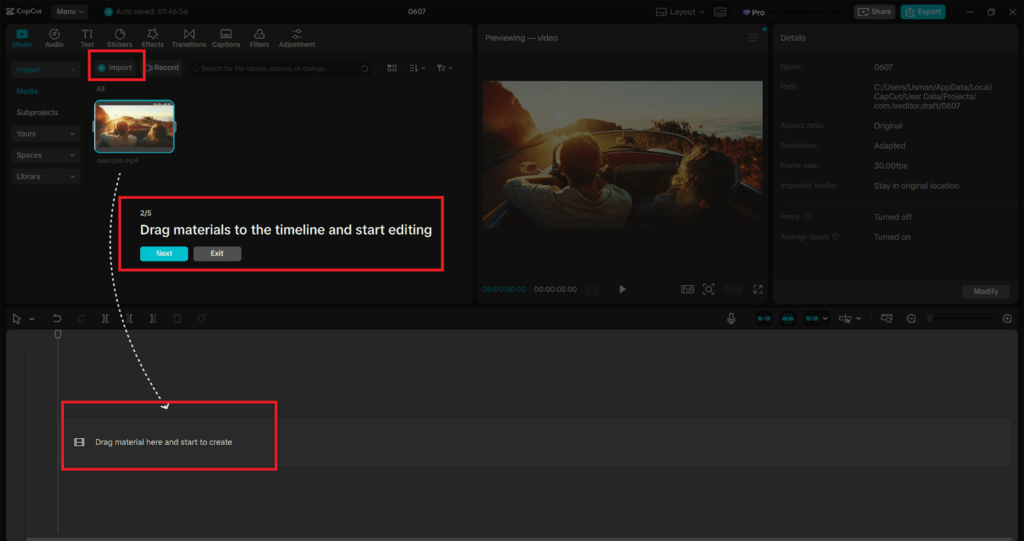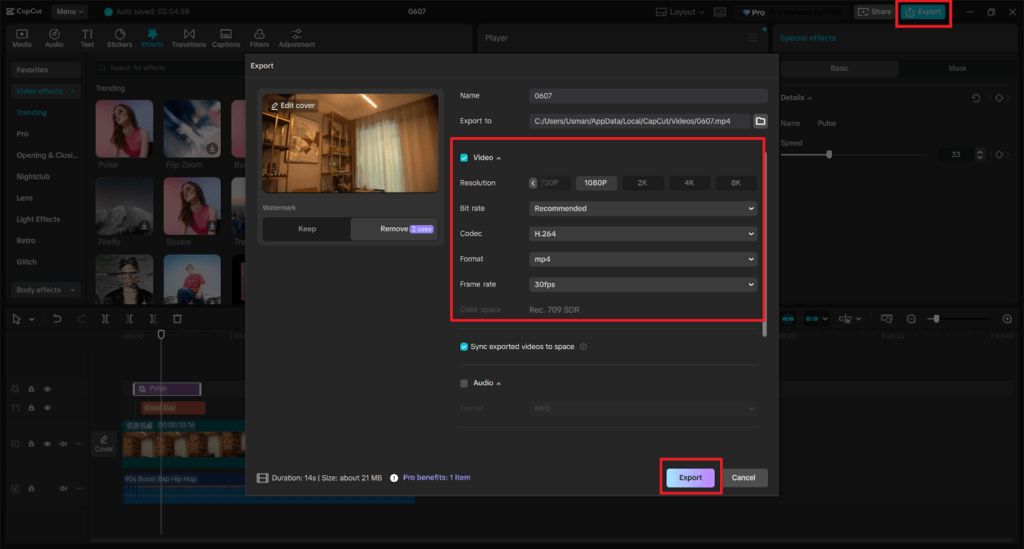So, you just got yourself a fresh pair of running shoes—box still smells like the store, laces crisp, soles untouched.
I get it.
You’re itching to lace them up and hit the road.
I know exactly how you feel.
A few months ago, I tore open a new pair and headed out for a long run without thinking twice.
Three miles in, I had blisters on both feet, my arches were throbbing, and I was cursing myself the whole way back.
Rookie mistake—but one I had to make to learn a simple truth:
Even the best shoes need time to settle in.
But here’s the thing—it doesn’t have to be a painful process.
If you ease into it the right way, breaking in your new running shoes can be smooth, maybe even enjoyable.
In this guide, I’ll walk you through exactly how long it takes (spoiler: it depends), how I approach it with my runners, and what to watch for so you’re not sidelined by avoidable aches.
How Long Does It Take to Break In Running Shoes?
This is probably one of the most common questions I get as a coach: “How long until my new shoes feel good?”
I wish I could give you a magic number.
But the truth?
It depends—on the shoe, your feet, and how you run.
For me, most shoes feel fully broken in after two to three weeks of regular use.
I had one pair of beefy stability shoes that took almost a month before they stopped fighting my feet.
At first, I thought something was wrong with my form. Turns out, I just needed to give them time.
For most runners, I recommend planning for 15 to 25 miles of steady running before shoes feel dialed in.
That usually falls within the 2–3 week range if you’re running regularly. This isn’t just my experience—it lines up with what experts say too.
According to podiatrist Dr. Bruce Pinker, some shoes start to feel right after just 5 to 10 miles. For others, especially structured models, the break-in curve is steeper.
Here’s how it usually plays out:
- Light, flexible shoes (like most daily trainers)?
They often feel good right out of the box—or by run number two. - Heavy-duty shoes (think: high-stack stability or trail shoes)?
They take longer to break in. I had a friend swear his firm-foam Adidas didn’t feel right until after 30 miles.
Contrast that with a pair of ZoomX Nike trainers I tested last year—those babies felt great on my second run. That soft foam just needed a couple of miles to settle in.
It’s Not Just the Shoe—It’s You
Your feet matter. A lot.
If you’ve got high arches, wide feet, bunions, or anything like plantar fasciitis, your break-in window might be longer.
Shoes aren’t made in custom shapes (unless you’re splurging on that), so your foot might need a little time to get used to the way a new shoe moves, supports, and lands.
Also, switching shoe types can throw your body off.
Going from a plush stability shoe to a sleek minimalist trainer?
You’re going to feel that transition—and you’ll need more patience while your body adapts.
On the flip side, if the new pair is just a newer version of what you’ve been running in, the adjustment might only take a few runs.
When to Say “Nope”—This Shoe Ain’t It
Let’s keep it real—not every shoe is “break-in-able.”
If you’re 50 miles in and still feeling hot spots, weird pressure points, or pain you can’t explain, don’t keep pushing.
That’s not a shoe that needs more time.
That’s a shoe that doesn’t fit your foot or running style. And no amount of toughing it out will fix that.
Return it. Exchange it. Move on.
You’re not weak for doing that—you’re smart.
Running in shoes that don’t work for your body is how injuries happen.
I’ve coached too many runners through plantar fasciitis, shin splints, and knee pain that could’ve been avoided if they had just swapped their shoes sooner.
Why Breaking In Running Shoes Actually Matters
I get this question a lot: “Do I really have to break in my running shoes? Can’t I just lace ‘em up and go?”
Honestly, I used to think the same thing.
Some veteran runners will tell you that if a shoe fits well, it should feel great from day one—and they’re not totally wrong.
A solid pair should feel comfortable right out of the box, especially if you’ve nailed the sizing and the fit (shoutout to verywellfit.com for backing that up).
But here’s what most people won’t say loud enough: just because it feels okay on day one doesn’t mean your body is ready for 10 miles in them.
Here’s why that matters:
1. Your Shoes Need Time to Loosen Up
Right out of the box, everything—the upper, the midsole, even the insole—is stiff.
It hasn’t molded to your foot yet.
That rigidity can create pressure points, friction, and rubbing. The first few runs help soften the shoe so it starts shaping around your unique stride.
Think of it like a baseball glove or a leather jacket. It feels tight at first, but after a few wears, it fits you like it was made for you.
2. New Shoes Limit Your Foot’s Natural Movement
Running coach Sean Fortune backs this up—brand-new shoes tend to be stiffer and restrict your natural range of motion.
If you head out for a long run right away, you’re asking your body to adapt to something that hasn’t softened yet.
That’s extra stress on your feet, calves, and lower legs.
I’ve seen that stress turn into foot cramps, blisters, even cases of plantar fasciitis or a flared-up Achilles. All because the shoe wasn’t given time to chill out.
3. Switching Shoe Types? Break-In Is Non-Negotiable
If you’re changing brands, dropping from a high-cushioned shoe to a minimalist one, or moving from a stability to a neutral shoe, listen up: you need a transition period.
Nike expert Ashley Campbell points out that a new shoe can mess with your mechanics—your stride, your foot strike, the way your muscles fire.
I saw this firsthand when I tried switching to zero-drop minimalist shoes after years of running in traditional trainers.
I thought I could jump right in.
Nope.
Ended up with a strained calf after one overly confident run. Took me a full month of easing in before my calves and Achilles stopped hating me.
4. You’re Avoiding Injuries
The obvious stuff like blisters or black toenails? Those show up quickly.
But more serious stuff—shin splints, sore knees, hip pain, even IT band flare-ups—sneak in when a shoe subtly messes with your gait.
Breaking in gives you a “test drive” window.
If something doesn’t feel right—a rub here, a weird pressure there—you’ll catch it on a short run, not during mile 12 of your long Sunday outing.
How to Break In Running Shoes (Without Destroying Your Feet)
Let’s be real—nothing kills motivation like getting blisters or sore feet from a brand-new pair of running shoes.
Here’s my go-to system. It’s been battle-tested over the years—both on my own feet and with runners I coach.
Step 1: Don’t Start with the Wrong Shoes
Before we even talk about “breaking them in,” let’s make sure you picked the right damn pair in the first place.
Sounds obvious, right? But trust me, I’ve made that mistake more than once.
I grabbed a pair that looked fast—sleek design, flashy color, and every guy at my track club seemed to be wearing them.
Bad call.
They were way too narrow and had zero support for my overpronating feet. No amount of breaking-in magic was gonna fix that.
So, here’s what I tell every runner now: the best shoes to break in are the ones that fit right from the start.
Here’s how to stack the odds in your favor:
- Pick the right type for your gait. Know whether you need neutral, stability, or motion-control shoes. If you’re not sure, try a gait analysis at a running store, or do the old-school “wet foot test” at home to check your arch type. I’ve got fairly average arches and roll in a bit (overpronation), so support shoes usually work best for me.
- Size matters—really. Your feet swell when you run. You want about a thumb’s width—roughly a centimeter—between your big toe and the front of the shoe. Snug at the midfoot and heel is good. But if your toes feel cramped, or your pinky is already rubbing the side? Don’t hope it gets better. It won’t.
- Comfort counts on day one. The shoes should feel pretty good right out of the box. Not perfect—but not painful. If they’re already rubbing weird or feel like bricks, that’s a red flag. Ask yourself: Do these feel like they hug my foot in a good way? Or is something off?
I always say: If you’re forcing your foot into the shoe, the shoe’s not the problem—you just need a different shoe. A better fit from the start means less pain later. And a lot fewer blisters.
Step 2: Wear Them Around the House Like a Weirdo
Once you’ve found your Cinderella shoe, don’t just rip the tag off and go hammer 10 miles.
Slow your roll.
Step one of breaking them in? Wear them like slippers first.
No joke—I wear my new running shoes around the house for a few days. Doing dishes, answering emails, even watching Netflix. My girlfriend thinks I’m nuts. But it works.
Here’s why: just walking around helps the shoe start to mold to your foot without the pounding from running.
The midsole softens up.
Your foot gets used to the shape. You avoid hotspots and heel blisters before they start.
A few pro tips:
- Keep it short at first. Wear them for an hour or two around the house, then swap back to your old shoes. Gradually increase it each day. On day one, I might just clean the kitchen in them. By day four, I’ll wear them to the grocery store or around the neighborhood.
- Keep them clean (for now). Most running stores only accept returns if the shoes still look new. So wear them on clean floors or treadmills while you’re testing them. If they start causing issues—slipping heels, hot spots, weird pressure—you’ll still be able to return them.
- Loosen them up with your hands. I’ll gently flex the toe box a few times—just a light bend forward and back to get some movement in the sole. Some experts even recommend manually flexing the forefoot 4-5 times before the first run. You’re not trying to break the shoe, just wake it up a little.
- Do a few squats or lunges. Sounds silly, but it helps. You’re flexing the midsole, letting your foot settle into the shoe’s shape. I’ve done air squats in my living room plenty of times just to get that break-in started.
I usually give it about 5–7 days of casual wear.
When the shoe starts feeling like a natural extension of your foot—even while you’re pacing around the house—you’re ready to take it outside.
3. Take Your New Shoes for a Gentle Test Run
Once you’ve logged some solid walking time in your new shoes, it’s time for the real test: running.
But don’t go full beast mode just yet.
This isn’t the day for crushing a tempo run or chasing a PR.
Whenever I lace up a new pair, I treat that first run like a slow first date.
No pressure. No pushing.
Just a short, easy jog—20 to 30 minutes max, around 2 to 4 miles depending on your pace. If your usual is five miles a day, scale it back to two or three. The goal here isn’t mileage—it’s feedback.
I always tell my coaching clients: think of it as a “test drive.”
You’re not trying to hit top gear. You’re just seeing how the shoes move, feel, and respond under a light load.
Here’s how I usually go about it:
- Keep It Easy. No speedwork. No hills. No chasing Strava segments. Treat this like a recovery run—conversational pace only. When I take a new pair out, I’m tuned into every step. Do they rub near the toes? Feel tight on the midfoot? Any heel slippage? Running slow gives you the space to notice these things—before they turn into blisters or bigger problems.
- Keep It Short. That first run? Think 2 miles around the block. If all feels good, maybe bump it to 3 or 4 on the next one. I usually give it a full week of short runs—never more than 3–4 miles—before I even think about taking them out for a long haul. Let your body adjust. Let the shoe adjust. You’re building a relationship here.
- Skip the Hard Stuff (For Now). I’ve made the mistake of doing intervals in brand-new shoes. Bad idea. The cushioning’s still stiff, the fit might not be perfect, and your feet haven’t adapted yet. Give them 1–2 weeks of easy running before you throw them into a fast workout or long run. You don’t want to find out at mile 5 of your 12-miler that they rub your pinky toe raw.
4. Rotate Your New Shoes with Your Old Pair
Here’s a move that’s saved me more than once: don’t go all-in on the new shoes right away. If you’ve got an older pair that’s still hanging in there, use it.
Rotate.
Let’s say you run four times a week.
Start by using the new pair once or twice.
Run the other days in your old, reliable shoes. This gives your feet a break and helps you ease into the new kicks without getting banged up.
Here’s why this helps:
- Eases the Transition. Your feet and legs need time to adjust—especially if the new shoes have a different feel, drop, or support level. When I switched to lower-drop shoes a few years ago, alternating saved my calves from being wrecked. Think of it like weaning off caffeine—slow and steady works best.
- Shoes Need Recovery Too. The foam in your shoes needs time to bounce back. After a run, that midsole gets squashed. Give it a day off, and it rebounds better. This extends the life of your shoes and helps keep the cushioning feeling fresh. Research from the Scandinavian Journal of Medicine & Science in Sports backs this up. They found that rotating between different running shoes can cut your injury risk by up to 39%. That’s huge.
- Test Without Risk. If you’ve got a race or a big long run coming up, you don’t want to risk going all-in with brand-new shoes. Rotate them in during your easy runs first. Once you’ve logged 40–50 miles in them and they feel good, you can start trusting them on longer efforts or race day.
When I break in a new pair, it usually looks like this:
- Tuesday: Easy run in new shoes
- Thursday: Workout in old shoes
- Saturday: Long run in old shoes
- Sunday: Recovery jog in new shoes
After a couple of weeks, if everything feels dialed in, I start mixing them into workouts and long runs. Injury rates dropped big-time once I adopted this pattern.
5. Mind Your Socks and Blister Prevention
Let’s be real: few things kill a good run faster than a nasty blister.
New shoes might feel exciting, but they’ve also got that little risk — a pinch here, a rub there — that can turn into a full-blown hotspot if you’re not careful.
I’ve been through it all.
Raw heels. Popped blisters on long runs. I even once ran a half marathon with tape wrapped around both pinky toes.
Not fun.
But with a bit of planning, you can avoid most of that pain.
Here’s what’s worked for me — and for the runners I coach:
Moisturize Your Feet (Seriously)
This might sound like a skincare tip, but it’s legit.
Dry feet are like sandpaper inside your socks. And friction is the enemy.
I make it a habit to slap on some plain, fragrance-free lotion after my shower or before bed — especially during dry months. It helps keep the skin soft and less prone to cracking or rubbing.
Just don’t do it right before a run — nobody wants greasy feet sliding around in their shoes. Do it the night before or give it plenty of time to soak in.
Once I started this habit, my post-run blister rate dropped like crazy. Try it. Your feet will thank you.
Sock Choice Is Make-or-Break
Forget those 10-for-$5 cotton socks from the department store. They soak up sweat like a sponge, bunch up, and turn your foot into a blister magnet.
Go for moisture-wicking socks made of technical fabric — think polyester, nylon, or merino wool. These keep your feet drier and cooler and reduce the chance of hotspots.
Pay attention to thickness too.
If your new shoes feel tight, wear your thinnest pair. If they feel a little loose or your heel’s moving around, go for a cushioned sock. I’ve got a drawer full of sock options just for this reason.
Think of your sock like part of your shoe fit system — it’s not just something you throw on.
One expert at Nike even suggested experimenting with sock thickness when breaking in shoes. That advice helped me solve a rubbing issue in the heel once — just by switching socks. No shoe change needed.
Anti-Blister Balm = Cheap Insurance
If you know your feet — and you know where you usually get rubbed raw — get ahead of it.
I always apply BodyGlide or a little Vaseline on trouble spots before a long run, especially in new shoes.
For me, it’s the back of the Achilles or the arch.
If you’ve got tape or blister pads, use ’em.
One time I got a small blister on the inside of my toe during a tempo run. The next few days, I taped that toe, and boom — no more pain. It’s a tiny fix that can keep your training on track.
Tweak Laces, Insoles, and Tongue Position
Sometimes all you need is a quick adjustment.
Try different lacing patterns — like skipping an eyelet if you’re feeling pressure on the top of your foot, or using heel-lock lacing if your heel is slipping.
Make sure the tongue is laying flat (I’ve had wrinkled tongues cause weird irritation before).
And don’t be afraid to swap insoles.
If the stock one is causing arch pain or rubbing, drop in one from another pair or an aftermarket option. That tweak alone has saved me from tossing out shoes that just needed a little tuning.
If you feel a blister starting mid-run, don’t be a hero. Stop. Adjust your sock. Apply tape if you carry it. It’s better to pause for 30 seconds than to be sidelined for a week.
The combo of solid socks, moisturized skin, and some preemptive care can save your feet.
After 10–20 miles, most shoes mold to your foot, and if you’ve done things right, they’ll feel like part of your body — not something you’re fighting against.
6. Take Your Time and Listen to Your Body
Now let’s talk about the mindset.
Breaking in a new pair of shoes isn’t a race.
I get it — you’re pumped to hit the road and rack up miles. I’m the same way. But I’ve also rushed the process and paid for it in sore arches and ruined workouts.
Give your shoes — and your body — time to adjust. It’s not just smart. It’s necessary.
Build Up Slowly
Start with short, easy runs — think 2 to 4 miles max.
In week two, maybe add some distance or a short tempo segment. By week three, you can go longer if things feel good.
But don’t force it.
If something feels off — heel soreness, tight calves, hotspots — back off.
Rotate your old pair in and give it time. Research even shows that gradual transitions help your body adapt and prevent injury.
Know the Difference Between “New Shoe Weird” and Real Pain
Some odd feelings are normal with new shoes — your foot isn’t used to them yet.
But sharp arch pain?
Burning blisters?
Pain that lingers after the run?
That’s your body screaming at you to stop.
As a coach, I always say: discomfort is okay, pain is not. Don’t tough it out if your gut tells you something’s wrong.
How to Know When Your Running Shoes Are Fully Broken In (And Ready for Real Work)
So, you’ve been putting in the miles, easing into those new shoes, trying not to rush the process.
But now you’re wondering—are they finally broken in?
How do you really know?
Here’s the deal: when your shoes are dialed in, they should feel like an extension of your feet.
No distractions. No pinching. No “new shoe” weirdness.
Just you, the ground, and the rhythm of your run.
I always say—when you forget you’re even wearing them, that’s when you’ve nailed it.
Let’s break it down with a few signs that your shoes are fully broken in and ready for whatever you throw at them:
They Move With You, Not Against You
At first, new shoes can feel stiff—like your feet are arguing with them every step. Maybe the sole feels a bit like a plank, or the upper digs into your pinky toe just enough to be annoying.
But after 30, maybe 40 miles?
The shoe should start flexing where your foot naturally bends. The upper softens up. The midsole molds to your stride. It’s like they’ve learned your foot’s language.
For me, that’s the sweet spot. When my trainers start feeling like they were made just for me, I know they’re game-ready.
No More Rubbing, Blisters, or Hot Spots
This one’s huge.
If your heel is still getting chewed up after a few weeks, something’s off. You shouldn’t be finishing runs with sore toes or mystery pain.
Once broken in:
- The heel should feel snug but soft—no digging into your Achilles.
- The toe box should let your toes wiggle without jamming the front.
- No more new blisters. No more tape. No more band-aids.
If you’re finishing your runs without noticing your shoes at all, that’s a massive green light.
That Brand-New Stiffness is Gone
You know that tight, overly springy feeling some shoes have out of the box?
Especially with modern foam tech—sometimes it feels like you’re running on the shoes, not with them.
But give it a week or two of real running and that bounce levels out. The sole gets more predictable, more stable.
If you bend the shoe in your hands and it flexes more than it did on day one, that’s a physical sign the break-in is happening.
Your Stride Feels Normal Again
When I lace up a new pair, my first few runs always feel a little off.
Maybe my cadence is weird.
Maybe I subconsciously adjust my form.
It’s normal.
But once the shoes are broken in, it all clicks. I’m back to my usual flow. I’m hitting my splits, my stride feels clean, and I trust the shoes on any surface or pace.
That’s when I know: these are ready for speed workouts, long runs, race day—whatever I’ve got planned.
Final Word: Trust the Feel
There’s nothing like that moment when your shoes finally feel broken in.
No more doubts. No more adjusting. Just smooth miles ahead.
They’ve gone from strangers to training partners. From fresh-out-the-box to road warriors.
So enjoy it.
You earned that comfort.
Now tell me—what’s your favorite running shoe to break in? Ever had a pair that felt like magic once you hit that sweet spot?
Drop your stories in the comments—I’m always up for some good shoe talk.







